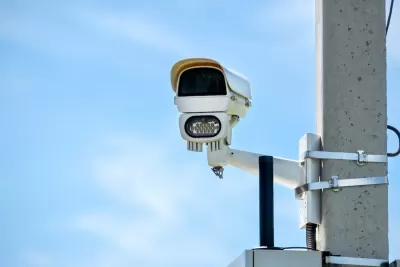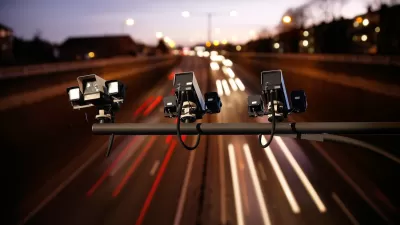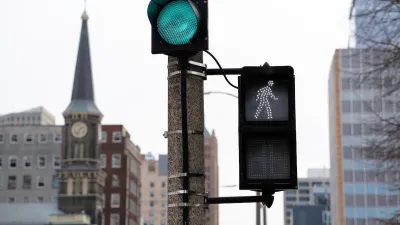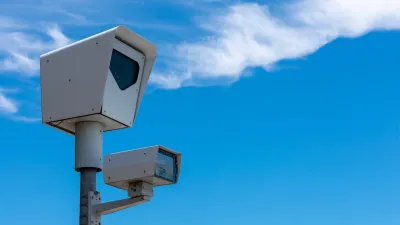Excessive speeding along dangerous segments of Roosevelt Boulevard dropped by 90 percent after the city installed automated enforcement cameras.

Traffic fatalities were cut in half along a Philadelphia boulevard after the city installed automated speed cameras. Writing in Smart Cities Dive, Dan Zukowski notes that Roosevelt Boulevard also saw a 90 percent reduction in excessive speeding in the seven months since the cameras’ installation.
The 12-lane highway through densely populated neighborhoods in Northeast Philadelphia has a posted speed limit of 45 mph. A Streetlight Data analysis found that before speed cameras, the mean speed along one segment where there have been many fatal crashes was 51 mph at 8 a.m. on an average Tuesday.
The total number of crashes on the street fell by 36 percent in a year, while that number only fell by 6 percent across the entire city. While average speeds continue to decline along the segments with cameras, other parts of the boulevard continue to pose a threat to pedestrians, warranting additional safety improvements, according to an analysis by Streetlight Data. “In 2023 the state secured a $14.5 million federal grant that will go toward curb extensions, realigned crosswalks and lane configurations, improved traffic signals and new or renovated transit stops along Roosevelt Boulevard.”
FULL STORY: How Philadelphia cut crashes on one of its most dangerous roads

Trump Administration Could Effectively End Housing Voucher Program
Federal officials are eyeing major cuts to the Section 8 program that helps millions of low-income households pay rent.

Planetizen Federal Action Tracker
A weekly monitor of how Trump’s orders and actions are impacting planners and planning in America.

Ken Jennings Launches Transit Web Series
The Jeopardy champ wants you to ride public transit.

Crime Continues to Drop on Philly, San Francisco Transit Systems
SEPTA and BART both saw significant declines in violent crime in the first quarter of 2025.

How South LA Green Spaces Power Community Health and Hope
Green spaces like South L.A. Wetlands Park are helping South Los Angeles residents promote healthy lifestyles, build community, and advocate for improvements that reflect local needs in historically underserved neighborhoods.

Sacramento Plans ‘Quick-Build’ Road Safety Projects
The city wants to accelerate small-scale safety improvements that use low-cost equipment to make an impact at dangerous intersections.
Urban Design for Planners 1: Software Tools
This six-course series explores essential urban design concepts using open source software and equips planners with the tools they need to participate fully in the urban design process.
Planning for Universal Design
Learn the tools for implementing Universal Design in planning regulations.
Heyer Gruel & Associates PA
Ada County Highway District
Institute for Housing and Urban Development Studies (IHS)
City of Grandview
Harvard GSD Executive Education
Toledo-Lucas County Plan Commissions
Salt Lake City
NYU Wagner Graduate School of Public Service





























